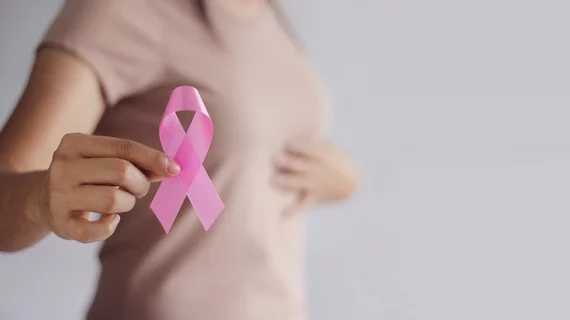Bolstering the readability of breast imaging recall letters can significantly improve timely patient follow-up.
That’s according to a new retrospective study out of Johns Hopkins, published Wednesday. Back in 2019, the Baltimore-based provider revised the language of its “recall lay letter,” sent to women with abnormal mammography results, so that it would read at a sixth grade level. Gauging the difference between pre- and post-intervention, Derek Nguyen, MD, and colleagues found the follow-up rate within 60 days jumped from 90.1% up to 93.9%.
When controlling based on imaging site, the intervention produced a 1.78-fold increase in the odds a patient would return for subsequent imaging, Hopkins researchers wrote July 29 in JACR.
“Revising our institution’s recall lay letter to a lower reading grade level significantly improved timely patient follow-up in the setting of abnormal results on screening mammography,” concluded Nguyen, a diagnostic radiology resident, and five co-authors. “We hope that this follow-up study will solidify the importance of appropriate readability of written patient communication and potentially modify recall lay letters currently being used by other breast imaging practices.”
Johns Hopkins imaging experts highlighted the importance of this issue as patients strive to take greater control of their care. The Mammography Quality Standards Act mandates that providers send a recall letter within 30 days of the initial visit, using easy-to-understand language. Plus, the CDC and National Institutes of Health recommend using a sixth to eighth grade reading level.
After making such revisions, Nguyen et al. analyzed screening mammogram data from their institution—targeting BI-RADS category 0 assessments while cutting out any technical recalls—gathered in the year following February 2018. They then matched that up against the following 12 months starting in February 2019, after the changes were made.
All told, researchers included 1,987 patients in the first group, with 2,211 part of the post-intervention study. In addition to the 1.78-fold uptick, the team also discovered that black women, those on Medicare or Medicaid, and individuals from the top 15% of disadvantaged neighborhoods also had a “significant” increase in follow-up adherence. But when controlling for the intervention group, those patient populations were still less likely to undergo follow-up in a timely fashion compared to white women, those with private insurance, or women from advantaged communities.
“Therefore, although intuitively, improved readability should improve patient follow-up across all races, our disparate racial results suggest that even if educational disparities are addressed, there may be other underlying barriers impeding patient follow-up,” researchers wrote. “Further investigation is needed to understand how to define these barriers and how to overcome these challenges for these patient populations.”
Read more of the analysis in the Journal of the American College of Radiology here.

